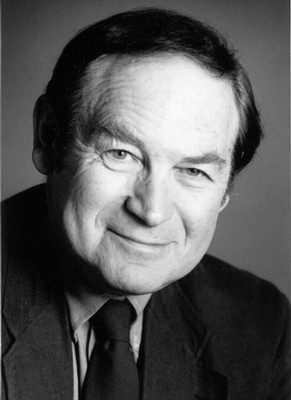

|

|
IN MEMORIAM
Stanley Allan Berger
Professor of Mechanical Engineering and of Bioengineering, Emeritus
UC Berkeley
1934 - 2013
Fluid dynamicist Stanley Allan Berger, Montford G. Cook professor emeritus of the Departments of Mechanical Engineering and of Bioengineering at the University of California, Berkeley, died on November 25, 2013 in Berkeley, California. He was 79.
Born in Brooklyn, NY, on August 9, 1934, Stan was the son of European immigrants and grew up playing stickball in the streets of Flatbush and enjoying Michigan Rummy around the dining room table with his large Jewish family, many of whom lived in the same apartment building. A gifted student, he enrolled at Cornell University at 16, but was terribly homesick, and returned home after one year to attend Brooklyn College, earning degrees in Physics and Mathematics. Stan received his Ph.D. from Brown University in Applied Mathematics, writing his doctoral thesis “Spherical Explosions in Sea Water”, under the supervision of Maurice Holt. Stan was a postdoctoral fellow at Princeton University before moving to California in 1961 and joining the faculty of the University of California, Berkeley, as an assistant professor.
In his 50 years on the UC Berkeley faculty, Stan used his knowledge of fluid dynamics and applied mathematics to solve real-life problems in physiology, medicine and engineering, on topics ranging from sickle cell anemia to vortex breakdowns in aircraft flight. He is best known for his research on the mechanics of blood flow and was instrumental in work analyzing the progression of arterial and atherosclerotic diseases, work that had a direct effect on the diagnosis and treatment decisions of radiologists and surgeons.
At the time Stan made his transition from the study of aerodynamic flows to physiological flows, many engineers viewed physiological problems as intractable and not amenable to engineering or mathematical analyses. As one of the pioneers in the emerging field of physiologic fluid dynamics, Stan worked tirelessly to make the field part of main stream academia and was a founding member of UC Berkeley’s Bioengineering Department, which opened in 1998. Stan’s interest in cross-disciplinary studies involving physics and applied mathematics also led to his being one of the founding faculty of the Berkeley Graduate Program in Applied Science and Technology (AS&T), which features the application of physical and mathematical techniques to fundamental investigations of emerging areas within the physical and life sciences.
Stan found purpose in a life of teaching and took enormous pride in advising his Ph.D. students, who went on to hold positions in academia, industry and government. His extensive Academic Senate service included Graduate Council Chair (3 years from 1977 to 1980), Committee on Courses of Instruction (Chair, 1971-72), Vice-Chair of the Division (1982-84) and Senate Policy Chair (1982-84).
His dedication to teaching was apparent only three years after his appointment to the Berkeley faculty, when he received UC Berkeley’s prestigious Distinguished Teaching Award as an assistant professor in 1964. He inspired his students and enthusiastically encouraged and recruited women into engineering. “He loved to make connections, bringing together colleagues who quickly became collaborators,” said Jennifer Stroud Rossman, one of Stan’s Ph.D. advisees who is now an associate professor of Mechanical Engineering at Lafayette College. “I remember the poster on his door, ‘I want to be an engineer like my mom,’ so distinctive a message in the mechanical engineering building in the early 1990s that I felt warmly toward him before I ever met him.”
Among Berger’s prolific publications were his first book, Laminar Wakes (Elsevier, 1971), about the smooth wake vortices left behind by jet engines, and the seminal textbook in his field, Introduction to Bioengineering (Oxford University Press, 1996), which he coedited with Werner Goldsmith and Edwin R. Lewis.
Stan was a leader in the Division of Fluid Dynamics (DFD) of the American Physical Society (APS). He was a Fellow of the APS and served in numerous positions on the executive committee of the DFD. He was the chair of the local organizing committee for the DFD’s 50th annual meeting in San Francisco in 1997 and was the chair of the Division’s executive committee in 2002. Ironically, Stan died at home while the Division’s annual meeting was taking place in Pittsburgh, PA. As word of Stan’s death began to percolate among the attendees of the meeting, people were taken aback and gathered in small knots in the corners of the meeting rooms to share memories about Stan’s accomplishments along with anecdotes and reminiscences about previous meetings attended with Stan.
Stan is survived by his wife, Beth Fain, daughters Maya Berger and Shoshana Berger and two grandchildren, all of Berkeley, California.
Philip S. Marcus
Vitaliy L. Rayz